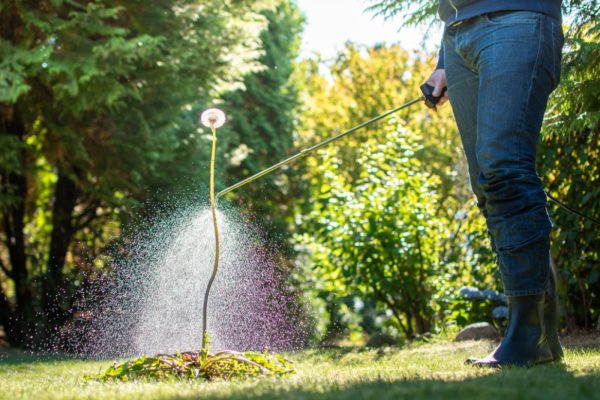What do the environment and your pocketbook have in common? They’re both seriously impacted by your HVAC system.
Extreme weather during summer and winter puts particular strain on both, resulting in households requiring over 67 billion kilowatt hours of energy per year. Utility bills shoot through the roof, but planet Earth also feels the brunt.
You need an approach that tackles the problem from both sides. This is where your window blinds and curtains come into play. You won’t believe some of the ways all three can drastically lower your bills while giving mother nature a break!
Table of Contents
What’s the Big Deal?
One of the hardest changes to make it a lifestyle change. If they were so easy, everyone would be doing them, right? Life gets messy, and sometimes it’s just easier to blast the AC on hot sweltering days.
What doesn’t sound so fun is trading in what you’re used to for a new routine. Trust, you’ll be thanking yourself later.
Let’s start with your health:
A study carried out by the University of Wisconsin found that heavy air conditioning use in the summer could potentially lead to a thousand more deaths per year due to air pollution. Despite advancements in energy alternatives, air conditioning still derives a significant amount of its power from fossil fuels.
As summer temperatures continue to rise, researchers forecast a proliferation of illnesses directly related to AC consumption.
Your heater isn’t off the hook either. Electric heaters, especially, suck all the humidity out of a room. This results in bone dry air that causes skin irritation and dehydration.
Many homeowners cave and buy humidifiers. While they provide much-needed moisture, they still require energy. In fact, the average American household now pays more than $2,200 a year in utilities!
Let’s look at your alternatives:
Why Windows Matter
Now that you understand the damage to your health and budget, it’s time to make some changes.
Windows, blinds, and curtains are the most underrated tools for saving energy. They’re usually just admired for their aesthetic, but they’re so much more.
They’re your literal ‘window’ to the healthiest and cheapest heat source there -is natural sunlight. Keeping windows uncovered on sunny days can lower your energy bill and give you that much-needed dose of vitamin D. This is particularly helpful for homeowners who also struggle with seasonal affective disorder (SAD).
This is a wonderful hack for warming your house during the day. It’s also a good way to avoid firing up the heater on crisp spring nights.
But it’s not the best solution on, particularly cold days. In fact, how you cover your windows on frigid says can make all the difference on your energy bill.
How Thermal Curtains Save Energy in Winter
Uncovering your windows on temperate days can save several hours worth of energy per day. Strategically covering your windows is just as cost-effective when it’s below freezing.
But not just any curtains or blinds will work. You need heavy thermal curtains. These are a must-have if your home lacks proper insulation.
Once your entire home is warmed up, turn off your heater, and make sure your thermal curtains are covering your entire windows. This will spare you several hours worth of energy. Do this every day in winter to see how much you save!
If you can’t purchase any thermal curtains right away, thick, heavy drapes can do in the meantime. You can also cover your windows with any large tapestries in your house.
Beat the Summer Heat with Window Blinds
The dog days of summer are just as bad for your bills (and environment) as those harsh winter months. This is where blinds and shutters really pay off.
Sure, they come in nearly every color to match any room. But they can save you hours worth of energy every day. According to the Department of Energy, window coverings reduce the transfer of heat into your home by 77%.
There are several ways heat creeps inside your home, and stays there, during summer. This is also known as ‘heat gain.’ Direct sunlight, skylights, wall cracks, and poor insulation are all common sources of heat gain. Even people themselves transfer heat from room-to-room.
That’s why isn’t so important to use a combination of window coverings and insulation to keep your home calm, cool, and collected. In fact, blinds alone can reduce heat loss by 45%. To stay on the cusp, read more now about the important role window blinds are playing in sustainable design!
More Tips for Saving with Window Coverings
These hacks work best when used in tandem with other energy-saving tricks. Plus, much of the same hacks you need for summer, you also need for winter.
Along with using blinds and curtains, remember the following:
- Insulate your walls, floor, and ceiling
- Insulate your attic and basement
- Cover your windows with air-tight plastic wrap
- Fill all holes and cracks in the walls
- Fill in any gaps around your windows
- Use houseplants to circulate oxygen
- Regulate moisture in the home
- Place draft stoppers at the base of your doors
You should also get a programmable thermostat that lets you schedule your heating and cooling system. Chances are, you don’t need to leave your heater on all night, so smart technology can make your HVAC system more efficient.
If you live in a particularly hot climate, however, you probably prefer to sleep with the AC on. Along with shutting your window blinds, cool down your bedroom with chilled bedding, create cool pressure currents in the home, and open your windows at night.
Start Saving!
There’s no time like the present to save more money (and reduce that carbon footprint.) Curtains and window blinds make an enormous difference, so don’t them for granted!
Get a head start on weatherproofing your home before the next round of bills hit your mailbox. Use this article as a guide and check back often to discover more ideas for saving money and energy at home.











